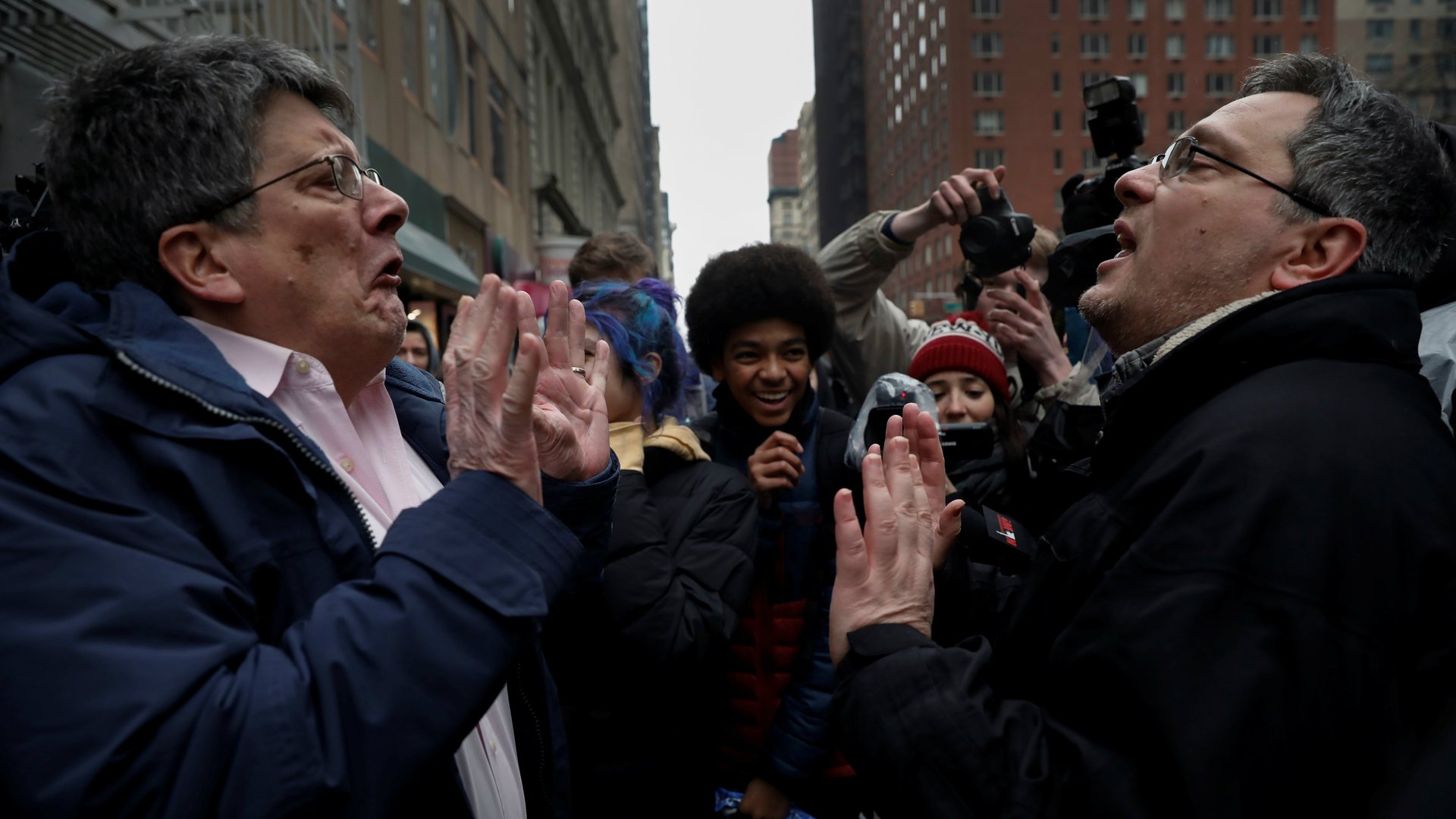No one really knows what’s causing US political polarization, but it’s not the internet
Americans are deeply divided about how their country should be run, a chasm that seems to widen with each passing election. The notion that the internet is a leading culprit of this increased polarization makes plenty of intuitive sense: The more people can hole up in their own digital echo chambers in places like Facebook, the harder it is for opposing views to seep in.


Americans are deeply divided about how their country should be run, a chasm that seems to widen with each passing election. The notion that the internet is a leading culprit of this increased polarization makes plenty of intuitive sense: The more people can hole up in their own digital echo chambers in places like Facebook, the harder it is for opposing views to seep in.
It’s also very likely wrong.
Polarization has been growing the most among older Americans—demographic groups that are the least likely to use the internet or social media, according to a new working paper (paywall) published by the National Bureau of Economic Research.
To figure out what role internet use likely plays in rising polarization, the authors started out by gathering nine measures used in previous research to analyze political polarization among respondents in the American National Election Study—things like the tendency to vote for the same party in both presidential and Congressional elections, or a respondent’s feelings toward conservatives and liberals. They then split up these respondents by age group, as well as by an index they created of predicted internet habits based on a wider range of demographic factors, such as race, education, and gender.
It turned out that the index of nine polarization measures increased by 0.18 points between 1996, around the time the internet was first commercialized, and 2012. However, during that same period, the index went up 0.38 points among respondents aged 75 and older—compared with an only 0.05-point increase for under-40 adults.
“These findings argue against the hypothesis that the internet in general or social media in particular are the main drivers of increasing polarization,” write the authors, economists Levi Boxell, Matthew Gentzkow, and Jesse Shapiro. “Any such explanation needs to account for the rapid increase in polarization among those with limited internet use and negligible use of social media.”
Drilling down into the individual measures, the authors came up with the same pattern: For eight out of the nine criteria, polarization has grown more among the old than young (the exception, intriguingly, was religious polarization). In four out of the nine, young adults registered a decline in polarization.
Things are a little less obvious in their results for the non-age-specific index of predicted internet usage. Overall, those most likely to have internet access were way more divided in their political views than those least likely. Still, polarization between 1996 and 2012 grew more slowly among the group more likely to be spending time online.
It’s not impossible to come up with alternative explanations for their findings, note the authors. Maybe internet use and social media affect the young and old differently. Or it could be that the internet divides young people, who then indirectly drive discord among their elders by influencing which politicians run for office or what stories traditional media choose to cover. But those effects would have to be huge to explain why the groups least likely to use the internet are experiencing the greatest polarization.